When you first think of compression socks or stockings, your mind probably imagines thick, white old-lady stockings that may be saggy at the knee or ankles. But those days of grandma’s stodgy old compression socks are over. A new, more fashionable compression stocking has come to town!
In this article, we’ll take a look at compression stockings, specifically knee high vs thigh high compression stockings. But first, let’s get a general idea of what compression stockings are and their uses.
Let’s talk thigh high compression stockings…
What Are Compression Stockings?
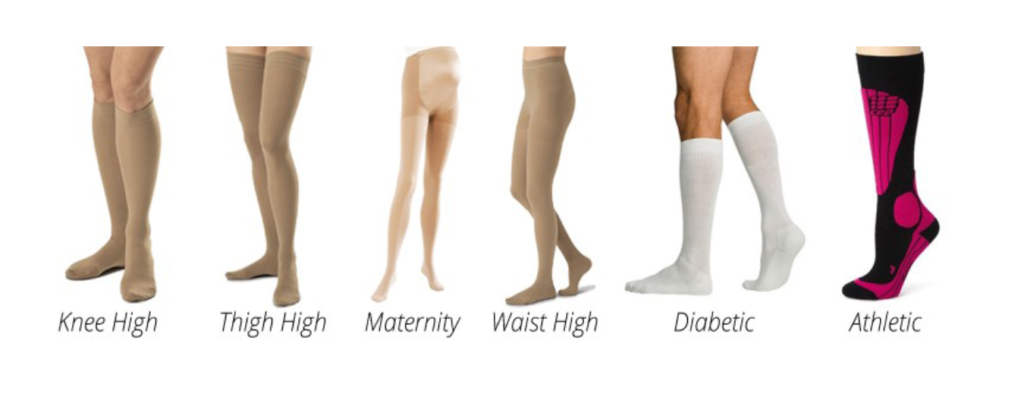
Compression stockings are specially made stretchy socks that give your leg a gentle squeeze when worn. Most of them are designed with graduated pressure that fits tightly around the ankle and then gets a bit looser as they go up the leg.

Compression socks and stockings are used to help minimize leg pain and aches, treat varicose veins, and prevent vein embolism, to name a few. Not only are they used to improve blood flow but also for easing pain and swelling of the legs.
Doctors may prescribe compression stockings to certain patients to reduce the tendency to develop deep vein thrombosis (DVT) – a condition that is related to blood clots and is also associated with other circulation problems.
Who Should Use Them?
Compression stockings can be effective for helping those with existing medical conditions, or those who want to prevent certain types of medical issues. Specifically,

- Those with circulation problems like DVT (Deep Vein Thrombosis), diabetes, or varicose veins
- Those who are at high risk for circulation problems, such as blood clots
- Those who just undergone surgery
- Those who find it difficult to leave their bed or having difficulty moving their legs
- Those who stand all day due to work
- Athletes
- Pregnant women
- Those who spend long periods of time on airplanes, such as pilots or avid travelers
How Do They Work?
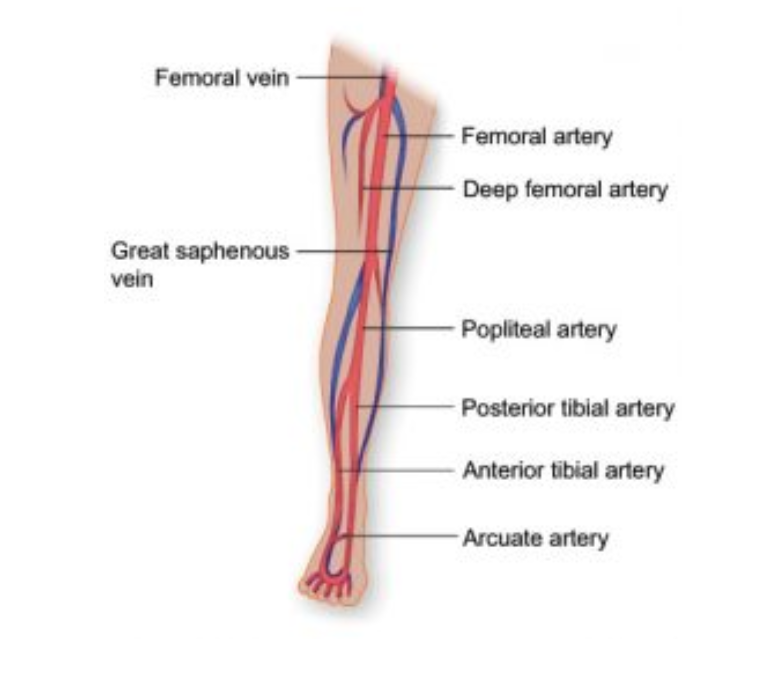
Compression stockings do just what their name says: they “compress” –or put pressure on–the legs and feet.
The pressure applied from the outside helps to improve the function of blood vessels. And also reduce the negative effects that gravity can have on the circulatory system. Blood traveling from the heart is aided by gravity as it goes to the feet, but when it moves back up to the heart in the veins, it is impeded by gravity and sometimes needs a bit of help so that the veins are not placed under undue pressure.
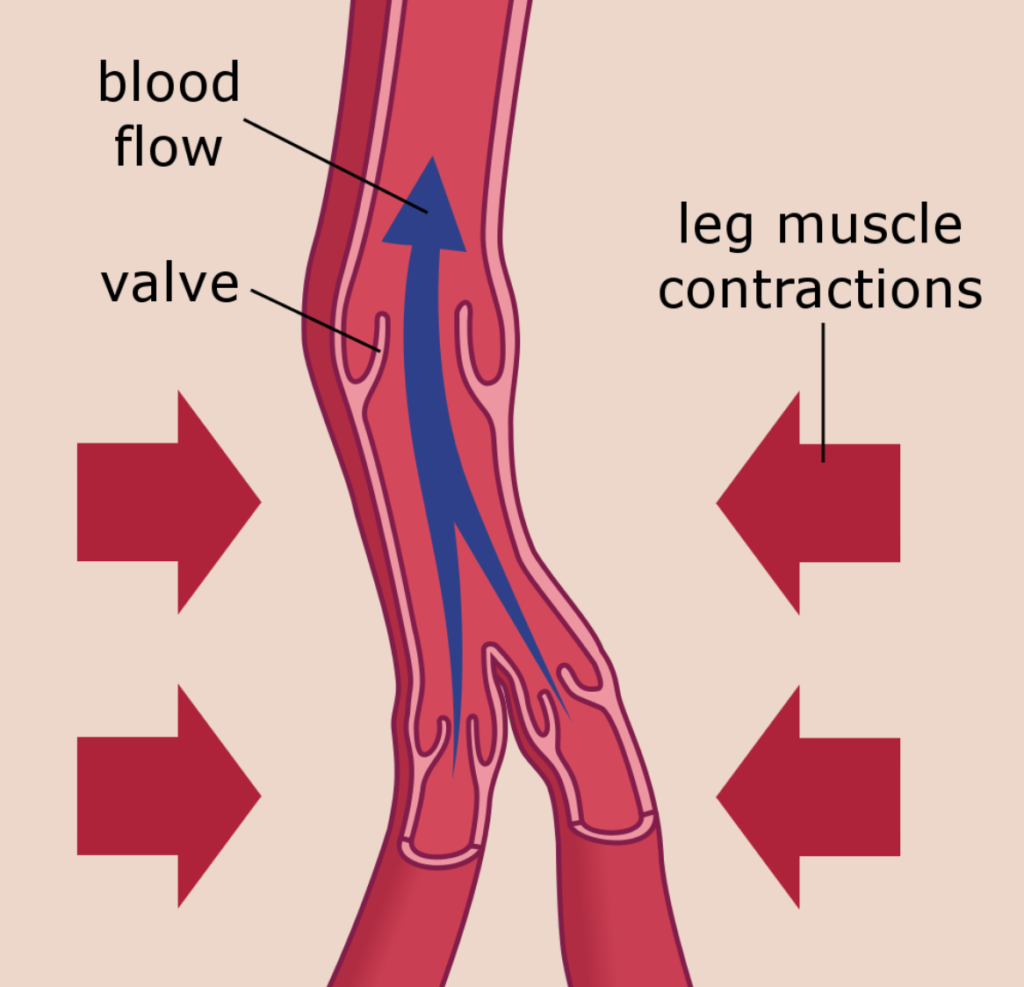
When compression socks are worn, the blood keeps moving in and out of the lower body and prevents the formation of blood clots. Blood clots are very dangerous in the legs because they can break off, travel through the bloodstream, and move into vital organs like the lungs. Compression stockings can help to reduce the potential of developing blood clots in certain patients who are at risk.
Compression stockings can also keep the legs from fatigue and pain. They may ease swelling in the ankles and feet, which is useful for athletes, nurses, and other people who are on their feet for long periods of time. For some people, compression socks are used to balance out the blood pressure and reduce dizziness or lightheadedness upon standing.
Athletes, including runners, triathletes, and basketball players often wear compression socks on their legs and compression sleeves on their arms. It is said that the compression causes better blood flow during activity, which then aids in receiving more oxygen in the muscles. This helps in enhancing performance and promoting healing for damaged tissues. Some also experienced a reduced amount of cramping and soreness after an intense workout.
In general, thigh-high compression stockings are recommended for those who have medical conditions or want to prevent them.
Where Can I Get Them?

Compression Socks can be bought over the counter, at a pharmacy or, even delivered right to your doorstep. Knee-high and thigh-high varieties can range from $10 to $100 a pair. As expected, higher-end, specialized medical stockings might be more expensive than over-the-counter ones.
Which Should I Choose?
Compression stockings are worn for a wide range of reasons: comfort, prevention of severe medical conditions, or even better athletic performance. So the type you’ll choose will depend on your needs. If you are under the care of a medical doctor, it is recommended to seek advice from your doctor.
To better understand which compression stockings you need, the three fundamental criteria to consider while choosing the best compression stockings are:
- Basic Selection Criteria
- Advanced Selection Criteria
- Intervention Selection Criteria
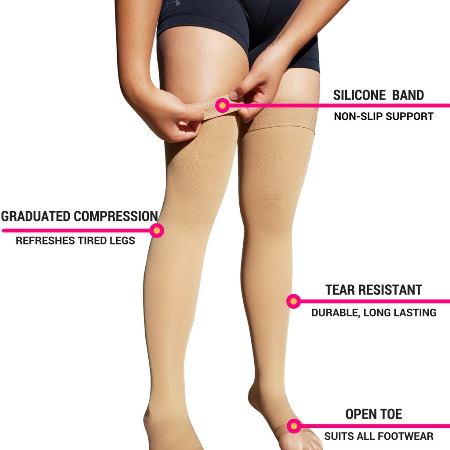
Basic Selection Criteria
The six factors you should consider when choosing compression stockings are:
1. Compression Level. Measured accurately on the mercury scale (mmHg), the compression level accurately depicts the amount of pressure required to treat, manage symptoms, or provide relief effectively. Stocking pressures typically range from 8-50mmHg, which offers treatments, prevention, and relief for a variety of conditions.
The lowest pressure in the range of compression stockings is 8mmHg and can be bought over-the-counter. Some anti-embolism stockings provide pressure within the range of 15-20mmHg. However, the most commonly prescribed range by most doctors is moderate compression that ranges between 20-30mmHg.
Some compression stockings will go higher up to 40mmHg to 60mmHg, but these are uncommon and specifically prescribed by a doctor. As the field of pressure increases, so as the price of the stockings.
2. Easy to Put On and Take Off. Stockings that come with higher pressure levels can be quite challenging to wear and remove, compared to the light and mild compression stockings varieties. Patients reported that experiencing difficulty in donning their compression stockings hinders them to wear them again. This leads to their non-compliance to the doctor’s prescription, plus it makes their condition worsen.

This compelled most doctors to prescribe a lower level of pressure ones that are easier to wear. But if one must wear the higher-level variant, it might be helpful to purchase a simple device to help in putting them on.

3. Comfort Level. An increase in pressure sometimes makes patients feel discomfort in wearing compression socks. Thus, some doctors prescribe a lower level of pressure ones so that patients will continue to wear them. However, chronic and acute conditions still need higher pressures.
4. Sizing. Compression stockings are available in a wide variety of styles and sizes. There are thigh-high stockings, pantyhose, knee-high socks, pregnancy hosiery, and thigh-high with waist attachment that patients can buy. Your doctor might help you pick the best one for you.
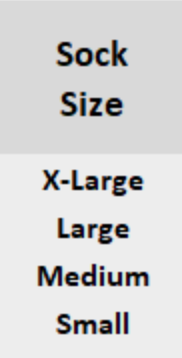
Circumference and length are the measurements needed for proper fitting. It is not based on shoe size, weight, or height. If you can get the right size, it will surely be more comfortable and effective.
It’s good to note here that compression socks that claim a “One Size Fits All” are not to be trusted because logically, the same size cannot be effective on a 90-pound person who is 4′ 10″ and a 300-pound person who is 6′ 6″. Chose the right size for you by knowing the length and circumference of your legs.
Bear in mind that incorrect size will keep the compression stockings from working well. The better the fit, the more effective it will be.
5. Stocking Features. There are also different features that compression socks have: more comfort, less and controlled infection, added fashion, and added durability. Some can also be closed or open toe, sheer or opaque, with silver additives, fashion prints, retaining bands, padding, and even reinforced toes or heels. It’s really up to you based on your medical needs as well as your personal preferences.

6. Stocking Patterns. These products will also never be boring! It comes with amazing designs and various colors for everyone. The top stocking patterns are:
- Sport
- Cable
- Argyle
- Ribbed
- Diamond
- Herringbone
- Striped
Sport stockings, for example, add a lot of flare and color. While some are designed with safety features and are composed of reflective materials.
Advanced Selection Criteria
Here, we’ll look at the compression type and the construction of the stockings:
- Compression Type. Compression stockings come with one of two distinct types of pressure: uniform compression and graduated pressure.
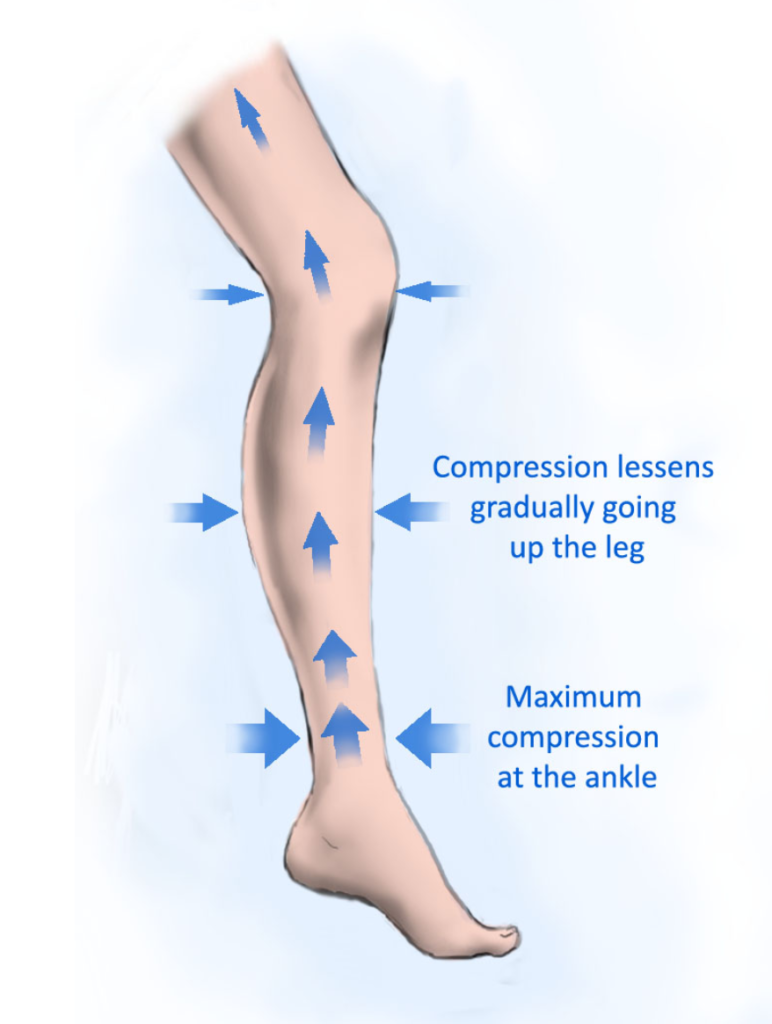
Uniform compression provides a nearly equal amount of pressure all over the garment. Although there might be a feeling of slight variations of pressure due to the curvature of the leg, for the most part, the pressure is the same throughout.
Graduated pressure provides high pressure on one end of the stocking and less on the other. The higher pressure is typically at the ankle, which is farther from the patient’s heart, while the lowest pressure is closer to the heart (the calf or thigh). This promotes healthy circulation by making the transition of blood to the limb more effective.
2. Stocking Construction. The two basic patterns of stocking fabrics are:
- Flat Knit
- Circular Knit
The circular knit is seamless and is beneficial for gauntlets and diabetes patients, while flat-knit stockings usually have a seam to provide a higher compression level. However, innovations can now produce seamless flat knit. Thus, “flat knit” might be indicated in the product for emphasis. People prefer seamless stockings because they are less irritable to the skin.
The circular knit design has a lifespan of 30 to 45 days, while the flat knit design may span from 45 to 90 days. It can also depend on the construction features and fabrics it is made from.
Intervention Selection Criteria
Pressure levels vary to correlates with the severity of the illness. A more complicated condition requires a higher pressure level. These factors should be considered before making your purchase:

1. Comfort or Performance. This intervention adopts lower levels of pressure and does not require a doctor’s prescription. They can be used daily or whenever the wearer wants to. On the other hand, those who spend time sitting, traveling, or working behind a desk, may benefit from mild compression. Lastly, sports enthusiasts may choose to use slight compression stockings for better recovery and circulation.
2. Prevention. Venous insufficiency can be prevented by wearing compression stockings. A low-pressure level can prevent spider and varicose veins. And can also be capable of reducing swelling and pain. Higher levels of pressure may be useful for preventing orthostatic hypotension and DVT (Deep Vein Thrombosis).
3. Treatment. Compression stockings might help in improving circulation. Especially for diseases like lymphedema, edema, swelling, superficial thrombophlebitis, and diabetes. Your doctor will help you determine what pressure level you need based on your condition.
4. Management. A chronic-staged illness is no longer curable but needs to be managed. Compression socks may be worn to help provide pain relief and lessen the symptoms of post-thrombotic syndrome (PTS), chronic venous insufficiency, and venous ulcers.
Troubleshooting Your Thigh High Compression Stockings
If you’re wearing compression stockings and they are uncomfortable (other than a gentle squeezing around the leg), then there’s probably a problem with the fit of your stockings. Take a look at these common problems to help you troubleshoot problems you might be having:
Compression Stockings Too Large?
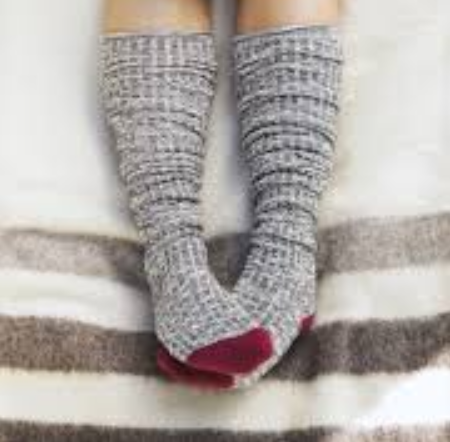
Some people may choose a size of compression stockings that is too large because they are easier to put on. But if they are too large, then it defeats the purpose because they are not providing the proper amount of pressure that you need on your legs. Too-large compression stockings will droop, fall down, roll or sag. When buying thigh-high compression socks, purchase according to the size of the leg’s circumference. Check with your pharmacist or another medical professional if you aren’t sure of the size you need.
Compression Socks Too Old?
If you’ve used your stockings for about 4-6 months, they may be worn out and have lived as long as you can expect. Eventually, compression stockings do wear out and you’ll need to replace them with new ones in order to get effective compression on your legs again. It’s easy to keep track by marking the date when you bought them on your calendar or setting a reminder on your smartphone to tell you when its time to buy a new pair.
You’re Washing Your Compression Stockings Improperly
If you are in the habit of putting your thigh-high compression socks in the washing machine with other items, then they’re going to get snagged, stretched out and ruined. Also, harsh detergents can compromise the quality of the fabrics that compression socks are made on, rendering them ineffective.

Always be sure to follow the manufacturer’s instructions on how to wash your compression stockings appropriately. This typically means hand washing, without twisting or wringing, and laying flat to dry. You must avoid detergents with bleach and keep your compression socks away from fabric softener.
Compression stockings need to be washed after each use and dried flat. This allows them to return to their original shape before you wear them again. Because they take some time to dry, you may need at least two pairs, but even more, pairs will keep them rotating and mean that you need to replace them less often.
You Aren’t Putting Your Compression Hose on Right

Most compression stockings are tight, thereby making it difficult to put them on. There may be a tendency that the upper part will be more stretched than the lower part causing the socks to slide down. Or you might be pulling them up so high that they compression too tightly, cutting off your circulation and causing even more problems.
Be sure to put your thigh-high compression stockings on by rolling them down your fingers and placing them on your toes. Gently move them up the foot, ankle, calf, and thigh with a gentle amount of pressure but not pulling too tightly. Don’t pull them up so high that they need to be folded over or cuffed at the top, as this applies extra pressure to the area and can cause problems.
When applied properly, compression stockings should feel snug but not uncomfortably so.
How To Wear Thigh High Compression Stockings
Just because you’ve been putting socks or stockings on for your entire life doesn’t mean that you have nothing to learn when it comes to wearing thigh-high compression socks! It’s important to go through the steps one at a time in order to get comfortable with putting them on. And be sure to take your time while you’re learning what works best for you. To avoid bunching and wrinkling, smooth out the stockings before beginning to put them on. Do not stretch out the stockings but allow them to keep their natural shape as much as possible.
Normally your doctor will indicate to put compression socks on in the morning as you get out of bed, and take them off at night before getting back into bed. On rare occasions, a doctor may indicate that you wear your compression stockings 24-7. Of course, you should still take them off when you shower.
Frequently Asked Questions About Compression Stockings

Q. Who Can Benefit From Wearing Thigh High Compression Stockings?
A. Anyone can wear gradient compression socks and feel better! Those who spend excessive time in sedentary standing or sitting positions can especially benefit from their use.
Wearing gradient compression stockings may particularly benefit individuals with these leg complaints:
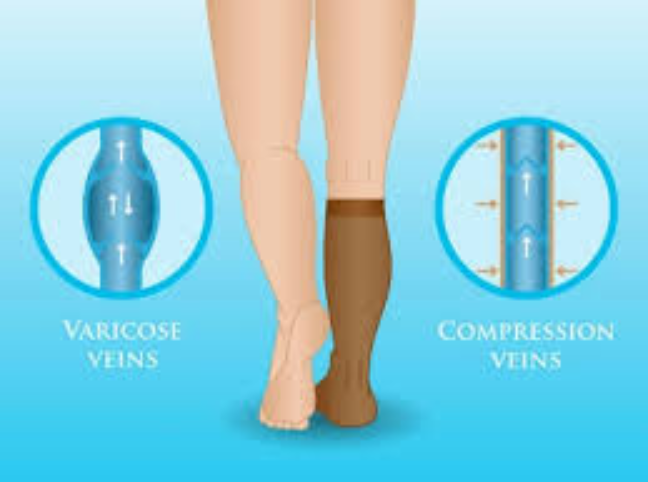
- Healed Venous Ulcer
- Venous Insufficiency
- Post-thrombotic Syndrome
- Varicose Veins or Spider Veins
- Active Venous Ulcer
- Lymphedema
- Leg Swelling
- Fatigued Legs
Before you start to wear compression socks of 20mmHg or above, you should consult your doctor. Additionally, if you’ve been diagnosed with an arterial circulation problem in your leg, it is recommended that you consult your physician before wearing any level of compression.
Q. What is Gradient Compression?
A. Gradient compression gives a squeezing to the leg that is highest at the ankle, with the amount of compression or squeezes steadily decreasing as it moves up the leg.
Q. What is Compression Therapy?
A. Compression Therapy is related to benefits that are gained from the utilization of specialized socks, stockings or sleeves used in the treatment of lymphedema, chronic venous disease or other ailments. Compression Therapy may also be used for pregnant women, athletes, those who stand a lot for their jobs, those who sit a lot for their jobs or other indications as needed.
Q. How Does Compression Therapy Work for Chronic Venous Insufficiency?
A. Compression Therapy is believed to give two significant benefits to those suffering from chronic venous insufficiency:
Compression enhances the pressure in the tissue under the skin, thus providing help in the reduction and prevention of some parts of the body swelling. The compression of this subcutaneous tissue aids in moving excess fluid into the tiniest of the blood vessel and would assist in preventing excessive fluid from leaking off these vessels.
Secondly, patients who want to reduce the possibility of the cutting of the superficial veins will be helped when they use compression. This helps in preventing blood in these veins from flowing backward, leading to congestion.

Q. What are the Reasons an Individual Should Not Wear Compression Socks?
A. There are several contraindications why a compression sock would not be recommended.
These conditions include:

- Uncontrolled congestive heart failure
- Ischemia
- Phlegmasia Cerulea Dolens
- Untreated Septic Phlebitis of the leg
Further, the wearing of compression should be applied with caution in the presence of:
- Immobility–when a person is confined to bed
- Weeping Dermatoses
- Impaired sensitivity of the limb
- Skin infections
- Incompatibility to the fabric of the garment
If you have these conditions and believe you should use compression stockings, speak with your doctor first.
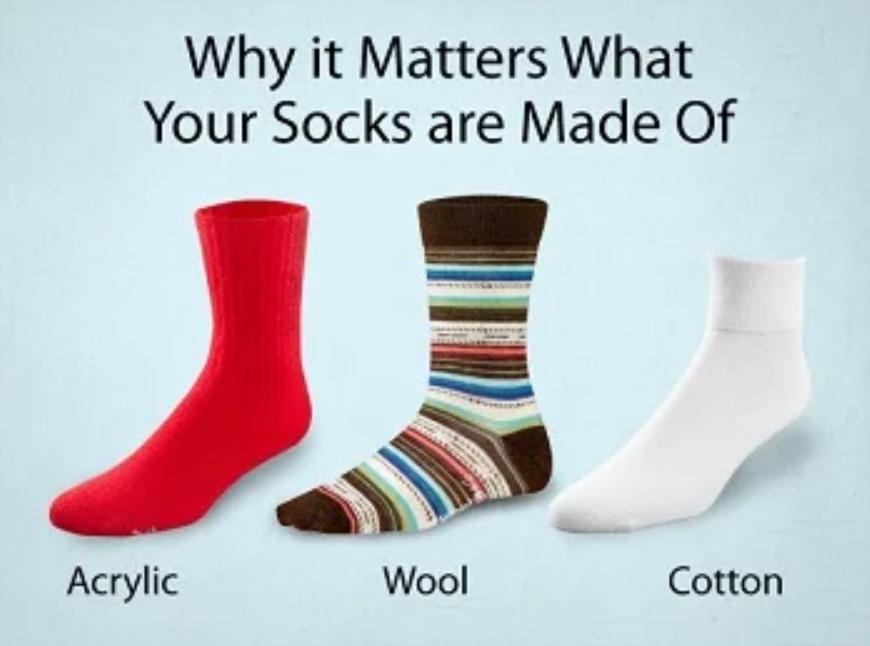
Q. What Are Compression Stockings Made Of?
A. While they may be designed with the use of a variety of fabrics, compression stockings today are typically made from either nylon, cotton, polyester (or sometimes wool) that is blended with elastane (Spandex) to provide stretch.
Q. When Should a Knee-length Compression Stocking Be Used?
A. In most cases, knee-length gradient compression socks are recommended to prevent or manage symptoms of chronic venous insufficiency. Also, they can be recommended to reduce leg swelling related to long periods of sitting or standing. When varicose veins and swelling are present above the knee, then a thigh-high or pantyhose style will be recommended as a practical choice.
Q. What Is called “Economy Class Syndrome?”
A. Economy Class Syndrome is the term for describing Deep Vein Thrombosis medical condition when it happens after an extended airplane trip.
Q. What Time of Day Should I Measure for Thigh High Compression Stockings?
A. Physicians recommend that measurements for compression socks should be done first thing in the morning before a person’s leg starts to swell. If the measurement is taken later in the day, swelling could skew the results.
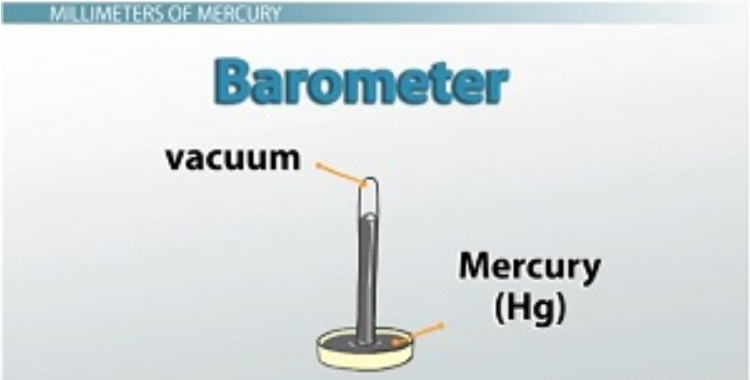
Q. What Does mmHg Mean?
A. The abbreviation mmHg stands for millimeters of mercury. It is the same measurement that is used in blood pressure cuffs, indicating the amount of “squeeze” or compression that placed on your leg. The higher the number, the more compression.
Q. Why Are Compression Stockings Prescribed For a Blood Clot?
A. Compression Stockings are often prescribed for a patient that has a deep vein thrombosis or blood clot in the leg in order to promote healthy circulation of the blood back up to the heart.
Q. What is the Difference Between Compression Stockings and Anti-embolism Stockings?
A. Anti-embolism stockings are designed for bedridden individuals. They are used to keep blood from accumulating in the leg veins while a person is not able to be mobile. Anti-embolism socks are specifically designed for a short duration when a person is hospitalized after surgery or when a person is not able to move for other reasons.
Q. Can I Wear Two Pairs of Compression Socks Together For Added Pressure?
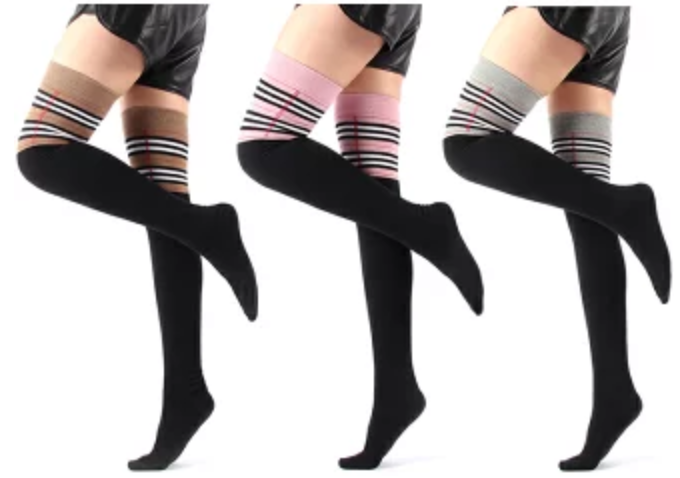
A. Yes! Additive effects may come with the use of compression stockings. For instance, some physicians have instructed patients to only wear a single level of compression in a pantyhose style, and then wear knee-length compression stockings over the pantyhose compression. For advice, check with your pharmacist or physician.
Now that you have a better idea of what thigh-high compression stockings are all about, you should find out if they could benefit you. If you aren’t sure, check with your doctor, if you already know what type and size you need, then don’t delay in ordering them today. The sooner you get your compression socks and start wearing, then sooner you can see what an impact they can make on your health!
